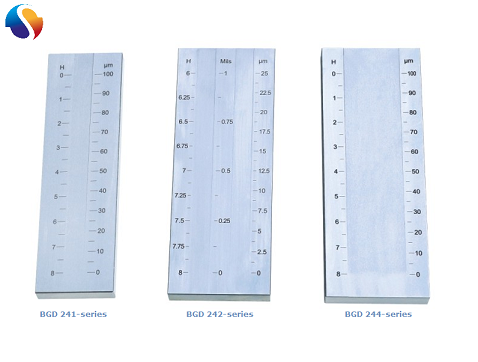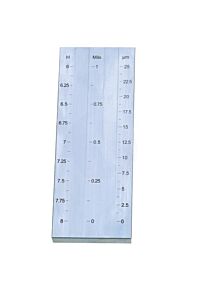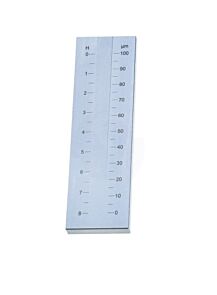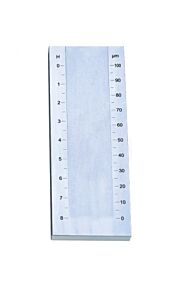Fineness of Grind Gauges

Many types of solid materials must be ground or milled into finer particles for dispersion in appropriate liquid vehicles. The physical properties of the resulting dispersions, often called “grinds”, depend not only on the actual size of the individual particles, but also on the degree to which they are dispersed.
The Fineness Gauges are used to indicate the fineness of grind or the presence of coarse particles or agglomerates in a dispersion. It does not determine particle size or particle size distribution.
Grind gauges are used in controlling the production, storage, and application of dispersion products produced by milling in the paint, plastic, pigment, printing ink , paper, ceramic, pharmaceutical, food and many other industries.
The Fineness Gauges is a flat steel block in the surface of which are one or two flat-bottomed grooves varying uniformly in depth from a maximum at one end of the block to zero near the other end. Groove depth is graduated on the block according to one or more scales used for measuring particle size.
The degree of dispersion is indicated in Microns (µm) or Hegman (H), The Hegman scale ranges from 0 to 8 with numbers increasing as the particle size decreases.
0 Hegman =100 microns particle size
4 Hegman =50 microns particle size
8 Hegman =0 microns particle size
The gauge and its scraper are made of hardened stainless steel and have one or two grooves with a graded slope(dependent on the model chosen), graduated in microns, mils, NS (Hegman). Our production facility controls precisely every guage and ensures it has a tolerance of ±2µm (flatness is less than 3 µm).
In accordance with the following standards:ISO 1524, ASTM D 3333, ASTM D 1210, ASTM D 1316, DIN EN 21524. And all gauges supplied with Calibration Certificate.




